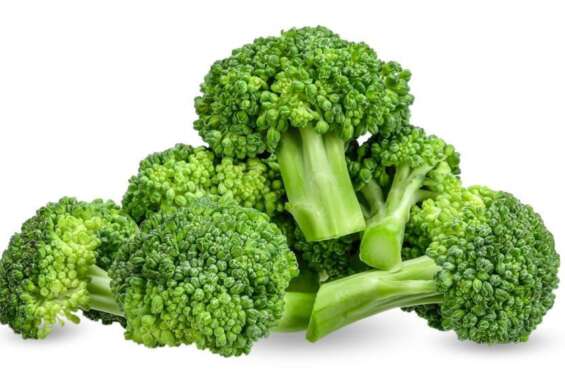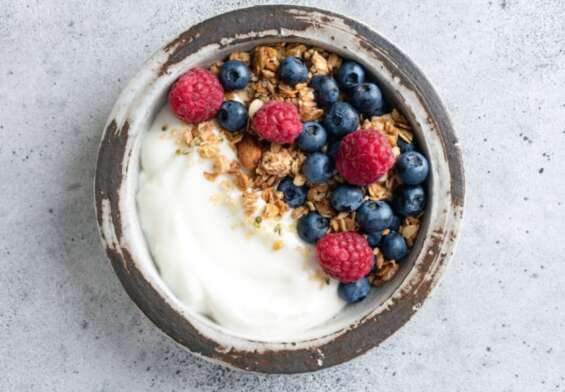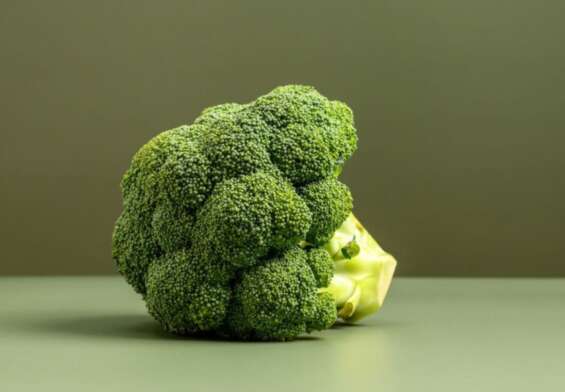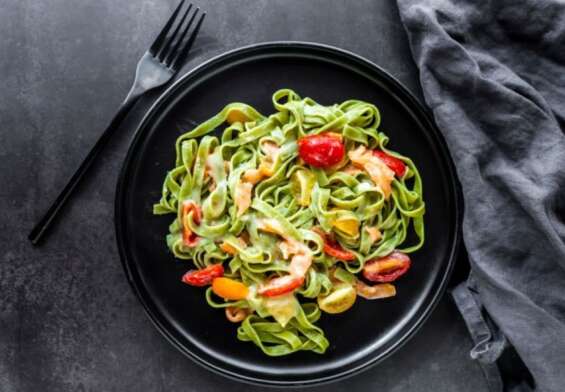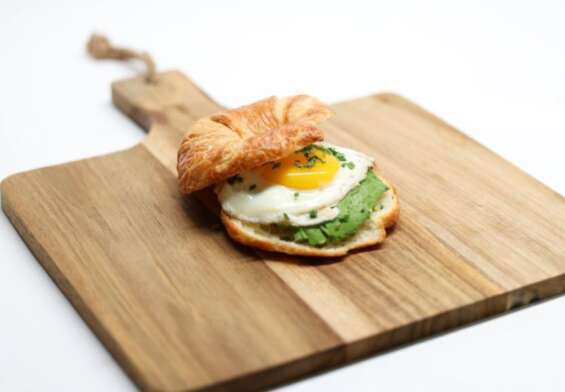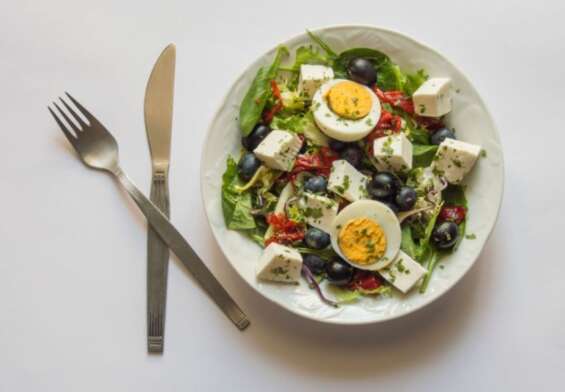
Negative Calorie Diet: Lose Weight With Low-Calorie Foods
The Negative Calorie Diet is a diet that is based on the idea that some foods require more energy to digest than the amount of energy they provide. This means that when these foods are eaten, the body burns more calories to digest them than the calories that are actually consumed. The diet is designed to help people lose weight by creating a calorie deficit. It involves eating mostly foods that are low in calories and high in nutritional value. Weight loss can be achieved by consuming fewer calories than the body needs. Additionally, the Negative Calorie Diet encourages people to engage in regular physical activity, which can help to further burn calories and promote healthy weight loss.
The Pros and Cons of the Negative Calorie Diet
Are you looking for a diet that will help you lose weight without having to count calories or go hungry? If so, you may have heard of the Negative Calorie Diet. This diet, which is based on the idea that some foods require more energy to digest than they provide, has been gaining traction in recent years. But is it really worth trying? Let’s take a look at the pros and cons of the Negative Calorie Diet.
Pros
- You don’t have to count calories or deprive yourself.
- You can eat a wide variety of foods, including vegetables, fruits, and lean proteins.
- You can eat until you’re full, as long as you stick to the approved foods.
- You can lose weight without having to exercise.
Cons
- It’s hard to know which foods are truly low in calories.
- You may end up eating too much of the same foods, which can be boring.
- You may not get all the nutrients you need.
- You may gain back any weight you lose once you start eating normally again.
So, should you try the Negative Calorie Diet? Well, it really depends on your goals and lifestyle. If you’re looking for a way to lose weight without having to count calories or make major changes to your eating habits, then it could be worth a shot. Just remember to be mindful of the cons listed above, and make sure to get all the nutrients you need.
What Foods are Included in a Negative Calorie Diet Plan?
A negative calorie diet plan sounds too good to be true, right? Well, it’s not! You can actually eat your way to weight loss with the right selection of delicious, nutritious, zero-calorie foods. Here’s a list of some of the most popular negative calorie diet staples:
- Celery: This crunchy vegetable is like a calorie-free snack.
- Cucumbers: Refreshing and full of flavor, cucumbers are a great addition to any diet plan.
- Apples: An apple a day keeps the calories away!
- Watermelon: This juicy treat is packed with vitamins and minerals, and it’s also fat-free.
- Grapefruit: This tart fruit is loaded with antioxidants and a great way to start the day.
- Broccoli: This vegetable is low in calories and high in fiber, making it a perfect diet food.
- Spinach: Popeye was onto something when he ate this leafy green!
- Carrots: These crunchy orange veggies are packed with beta-carotene, and they’re delicious too.
- Tomatoes: Just like grapefruit, tomatoes are loaded with antioxidants, and they’re great for snacking.
So, there you have it! With a negative calorie diet plan, you can eat all of the above and still lose weight. Who said dieting had to be boring?
How to Plan a Balanced Negative Calorie Diet
Are you looking to try out the latest diet fad? Why not give the Negative Calorie Diet a spin! As its name suggests, the Negative Calorie Diet is all about eating foods that supposedly have “negative calories,” meaning that they require more energy to digest than they give you. And while this diet probably won’t actually cause you to lose weight, it could be an entertaining way to shake things up in the kitchen. Here’s how to plan a balanced Negative Calorie Diet:
First, stock up on all the negative calorie foods you can find. This means asparagus, broccoli, cauliflower, celery, cucumbers, kale, lettuce, spinach, and zucchini. (No, you can’t eat negative calorie cupcakes… sorry!)
Next, decide how you’ll be eating these foods. Will you be munching on raw veggies all day, or will you be using them to make soups and salads? (You’re probably going to want to mix it up a bit to prevent boredom.)
Now it’s time to get creative! Try to come up with interesting recipes that include your negative calorie foods. You could make a veggie stir-fry, for example, or a zoodle dish with tomatoes and olive oil.
Finally, don’t forget to supplement your Negative Calorie Diet with other healthy foods. Lean proteins, complex carbohydrates, and healthy fats are all important for a balanced diet.
There you have it! A balanced Negative Calorie Diet isn’t as hard as you might think. Just remember to have fun with it, and don’t take it too seriously. After all, it’s not like you’re actually going to lose weight from eating negative calorie foods… right?
How to Stay Motivated While on the Negative Calorie Diet
Are you feeling the blues while on the Negative Calorie Diet? Don’t worry, you’re not alone! We’ve all been there. But don’t despair – we’ve got some tips to help you stay motivated and reach your weight-loss goals.
1. Get creative with your meals.
Instead of just eating plain steamed veggies every day, get creative with your recipes and make them more interesting. There are plenty of delicious and nutrient-rich recipes out there that don’t require a lot of extra calories.
2. Make it a game.
Challenge yourself to try new recipes or come up with creative ways to make the same dish. You could even make a game out of it – see how many different meals you can come up with using the same ingredients.
3. Treat yourself.
If you’re feeling really discouraged, treat yourself to something special. Buy yourself a new pair of sneakers, or maybe some healthy snacks that you can enjoy during your diet. It’s important to reward yourself for your hard work and dedication.
4. Get a diet buddy.
Find a friend who’s also on the Negative Calorie Diet and check in with them every day. That way, you can both hold each other accountable and share tips and recipes. It’ll make the whole process more enjoyable and you’ll have someone to share in your successes.
5. Have fun with it.
Last but not least, remember to have fun with it. The Negative Calorie Diet doesn’t have to be boring. Find ways to make it more enjoyable, like listening to your favorite music while cooking or having a dance party while you’re chopping veggies.
With these tips, you’ll be able to stay motivated and reach your weight-loss goals in no time!
Potential Risks of Following a Negative Calorie Diet
Are you thinking of following a negative calorie diet? Before you do, you should be aware of the potential risks involved in such a diet. Here are some of the pitfalls you may face.
First, there’s the risk of becoming a calorie ghost. That’s right – you may end up as a ghostly apparition, floating around and unable to eat anything. If you think about it, it makes sense – if you eat fewer calories than your body needs, you’ll lose weight. But if you go too far, you’ll literally become a shadow of your former self.
Second, there’s the risk of becoming a human vacuum cleaner. If you’re not careful, you’ll end up sucking in all the air around you in an effort to get more calories. This could make it difficult to navigate crowded spaces and could end up embarrassing you.
Third, there’s the risk of becoming a calorie hoarder. Eating fewer calories than your body needs means you’ll be storing extra calories in your body, which could lead to an unhealthy accumulation of fat.
Finally, there’s the risk of feeling hangry. Eating fewer calories than your body needs can lead to irritability, fatigue, and other unpleasant symptoms. These can make it difficult to focus or keep up with your daily routine.
So if you’re considering a negative calorie diet, make sure to consider the potential risks. Otherwise, you could end up a ghostly apparition, a vacuum cleaner, a calorie hoarder, or just plain hangry!
What Scientific Evidence Supports the Negative Calorie Diet?
It looks like the Negative Calorie Diet is becoming all the rage these days, but is there any scientific evidence to back up its claims? Well, some research suggests that it might be a viable option, but the jury’s still out on whether it’s the best way to lose weight. Here’s what we know so far:
First of all, the idea behind the Negative Calorie Diet is that certain foods require more energy to digest than they provide in calories. So, theoretically, if you eat these “negative calorie” foods, your body will burn more calories digesting them than it will get from them. Unfortunately, this (slightly magical) concept hasn’t been proven, and there is no scientific evidence to support it.
That said, some studies have shown that certain foods can indeed boost your metabolism, which would make them valuable in a weight loss diet. For example, a study published in the International Journal of Obesity found that eating more protein can increase your metabolic rate by up to 20%. Other studies have also suggested that certain spices, such as cayenne pepper and ginger, can have a similar effect.
Finally, there is some evidence that eating more fiber-rich foods, such as fruits and vegetables, can help you feel fuller for longer and thus reduce your calorie intake. So, while the Negative Calorie Diet may not be the miracle weight loss solution it’s cracked up to be, adding more of these foods to your diet may be a good way to get your health back on track.
Tips for Sticking to the Negative Calorie Diet
Don’t be tempted by the sweet stuff! No matter how much you may want that chocolate bar or ice cream, remember that a negative calorie diet means only eating foods that take more energy to digest than they provide.
- Get creative with your meals. Who says you can’t make a delicious negative calorie-friendly meal? Try adding some zucchini noodles to your favorite stir-fry or blending up a smoothie with some kale and fruit.
- Try new foods. Trying new negative-calorie-friendly foods is a great way to stay on track and find new flavors to enjoy. Try experimenting with different vegetables and fruits, like kohlrabi or dragonfruit, and you may find a new favorite!
- Get into a rhythm. Establish a routine for your meals and snacks. This will help you stay on track and avoid reaching for convenience foods.
- Get moving. Exercise is an important part of any diet, and it’s especially important on a negative calorie diet. Exercise burns calories and helps you stay on track.
- Keep a food journal. Keeping a food journal is a great way to track what you eat, so you know how many negative calories you’re consuming.
- Reward yourself. A negative calorie diet may not be easy, but it doesn’t have to be all work and no play. Treat yourself to a massage or a movie night every once in a while to stay motivated and on track.
How to Create a Negative Calorie Meal Plan
A negative calorie meal plan? Well, that’s a challenge! But don’t worry, we’ve got you covered. Here’s how to make it happen:
Step 1: Find the right ingredients.
To create a negative calorie meal plan, you’ll need to fill your plate with foods that require more energy to digest than they contain. That means you’ll want to focus on vegetables, fruits, and other low-calorie options. Try to choose a variety of colors and textures to keep meals interesting.
Step 2: Have fun with it!
When it comes to creating a meal plan, why not get creative? Instead of a boring salad, why not try a veggie “pizza” topped with grilled eggplant, zucchini, and sweet potatoes? Or maybe a colorful smoothie bowl with frozen fruits and a dollop of yogurt? Use your imagination and let the flavors come alive.
Step 3: Consider adding negative calorie spices and herbs.
Some herbs and spices have been found to have negative calories, meaning they require more energy to digest than they contain! Add a sprinkle of cayenne pepper, some fresh basil, or a dash of cinnamon to your meals for an extra boost of flavor.
And there you have it! With a little bit of creativity and some negative calorie spices and herbs, you can create a delicious and nutritious meal plan that won’t leave you feeling guilty after eating. Bon appétit!
Strategies for Overcoming Common Challenges on the Negative Calorie Diet
- Avoid Snacking: Snacks can be surprisingly calorie-dense, even when they’re marketed as “low-calorie.” To stick to the Negative Calorie Diet, opt for filling snacks like celery and carrot sticks, apples, or cucumbers.
- Avoid Social Pressure: Friends and family may not understand why you’re eating such a restrictive diet. Don’t let their remarks or questions get you down; politely explain that you’re following the Negative Calorie Diet and you’re feeling great!
- Eat Spicy Foods: Spicy foods can actually help you burn more calories, as your body works to cool itself down. Try adding a little fresh chili or cayenne pepper to your meals to help you burn more calories and stick to the Negative Calorie Diet.
- Get Creative: Eating the same foods over and over can get boring, so get creative! Try new recipes or pairings that use negative calorie foods. You can also switch up the way you prepare your meals, such as grilling, steaming, or sautéing.
- Get Moving: Exercise is an important part of any diet, and the Negative Calorie Diet is no exception. Make sure to fit in some physical activity each day to help boost your calorie burn.
What Does the Scientific Community Think of the Negative Calorie Diet?
The scientific community is not exactly full of praise for the Negative Calorie Diet. After all, it does seem too good to be true that you can eat as much as you want and still lose weight. But that doesn’t stop the millions of people who have tried it from swearing by its effectiveness!
The Negative Calorie Diet is based on the idea that some foods require more energy to digest than they provide in calories. So, if you eat enough of these “negative calorie” foods, you can supposedly lose weight while eating as much as you want.
Unfortunately, the scientific community isn’t buying it. The truth is that there’s no such thing as a negative calorie food. Any food you eat will provide some calories, even if it’s a low-calorie food like celery. Plus, it’s impossible to eat enough of these foods to make a significant difference in your daily calorie intake.
On the other hand, there are plenty of studies that show that eating plenty of fruits and vegetables can help promote weight loss. So, if you’re looking for a way to lose weight without going hungry, it’s probably a better idea to focus on these healthy foods instead of relying on the Negative Calorie Diet.
In conclusion, the scientific community isn’t exactly in love with the Negative Calorie Diet. But if you’re looking for a way to lose weight without feeling deprived, the best bet is to focus on eating plenty of healthy fruits and vegetables.
Conclusion
The Negative Calorie Diet is a popular diet that has been around for many years and promises to help people lose weight quickly. While it may be helpful for some people, it is important to remember that this diet does not provide all the nutrients that the body needs and may be difficult to maintain for long periods of time. Additionally, the diet does not provide enough calories for the body to function properly. Therefore, it is important to talk to a doctor or nutritionist before starting the Negative Calorie Diet to ensure that it is a safe and healthy choice for you.




